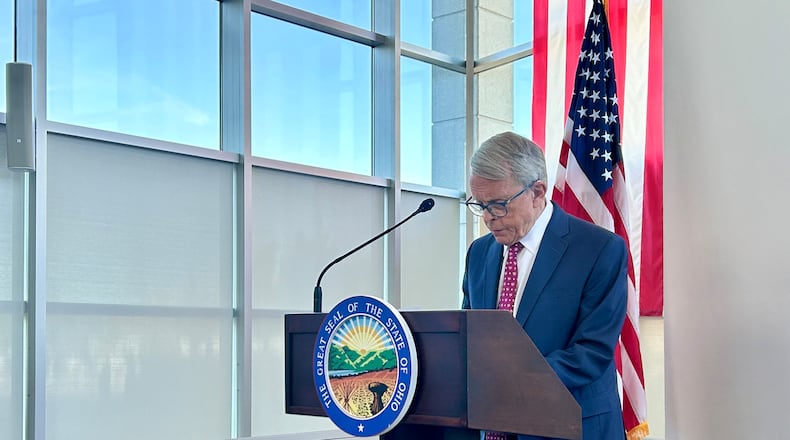“Everything in this report has merit and deserves serious consideration,” DeWine told reporters Tuesday, noting that most of the recommendations will need support from the Ohio General Assembly.
The list of recommendations was sparked by media reporting last year that highlighted significant staffing shortages, child-on-child violence, child-on-staff violence, and even deaths within Ohio’s system. Similar problems can be found across the country.
‘Smaller is better’
Tom Stickrath, the former director of Department of Youth Services (DYS) who led the task force through 10 meetings over the course of nine months, said moving away from centralized, large-capacity detention centers was the recommendation that would make the biggest difference.
“We feel so strongly about it, that if we had nothing else in the report but that, it would I think be a legacy piece to forever change the shape of juvenile justice in Ohio,” said Stickrath, who often used the phrase “smaller is better” to simplify the idea.
The report suggests that the state consider “facilities that allow for specialized housing units (or areas)” to better control violent youth. The report lays out that the assignment of youth to each unit ought to take into consideration the child’s age, developmental maturity, physical size, nature of court ordered treatment, and other characteristics gleaned from intake assessments.
Ohio is already implementing the “smaller is better” approach in Cuyahoga County, where the state is using recently-approved capital budget funds to decommission the 108-bed Cuyahoga Hills detention facility and replace it with “four smaller 36-bed buildings with specialized housing units,” according to DeWine. The plan is still in its initial stages.
“Young brains do not respond well to adult-style incarceration, so large juvenile justice facilities can actually be a barrier to rehabilitation,” DeWine said.
DeWine intends, with the general assembly’s support, to eventually enact the same process for the state’s two other high-capacity facilities in Circleville and Massillon. If put into effect, Ohio would have a total of 12 smaller capacity detention centers.
More local support
The report also asks the state to give additional funding to county prosecutors in Cuyahoga, Pickaway and Stark counties, given that those county prosecutors are tasked with prosecuting minors on behalf of the state. “Augmenting prosecutor funding will better equip them to handle the additional caseload,” the report reads.
Also when it comes to local involvement in juvenile justice, the report calls for the state to add to its number of Community Corrections Facilities (CCF), which provide an alternative, close-to-home sentencing option for judges when a minor commits some sort of felony.
The state currently has 11 CCFs, including one each in Montgomery, Butler and Greene counties, “but amazingly, none of these are in Franklin County, nor Hamilton County, nor Cuyahoga County; and of course, these three counties commit the most youth to DYS each year,” DeWine said.
The report suggests that a local CCF would allow minors to stay closer to home and allow more family involvement in their rehabilitation.
DeWine said there’s enough leftover funding recently set aside in the capital budget to create one new CCF in one of these three counties, but it’s not yet been determined which county will be the benefactor. He hopes to coax legislators into making more state funds available to establish a CCF in the remaining two counties.
‘Not designed’ for young children
The working group also hopes to implement a ban on children under 14 from entering the DYS detention centers, expressing that there are “better alternative options,” including CCFs.
“Children between the ages of 10 and 13 are different in many respects from the vast majority of the DYS population,” the report reads, arguing that younger children are at an increased risk of physical harm and emotional trauma in DYS facilities. “They are not only physically smaller than their older peers, but they cognitively receive and process information much differently than older youth.”
“Quite frankly, DYS is not designed for elementary (and) middle school kids,” said DYS Director Amy Ast. “The average age of DYS today is 17.8, so we’re hoping that with this recommendation, we could get some support from the legislature to serve those kids (under 14) in a different environment.”
Recommendations
The full list of recommendations also includes:
• A general ban on special needs youth from entering DYS facilities;
• More cooperation between various youth-focused state agencies and the Ohio Highway Patrol;
• Grant juvenile judges the ability to use discretion when sentencing youth for gun crimes instead of mandatory minimums;
• A prohibition on first-time, non-violent offenders being put into the system;
• The creation of staff wellness plans and the fostering of a talent pipeline between DYS and Ohio colleges and universities.
About the Author

